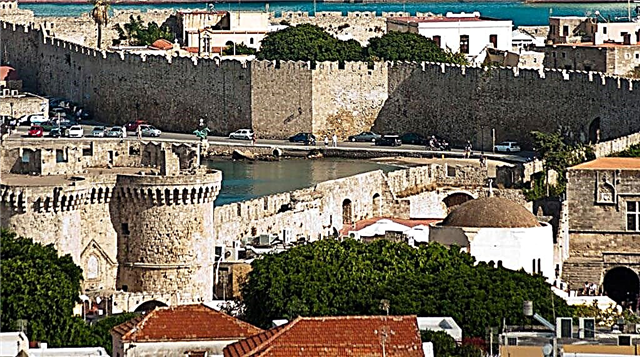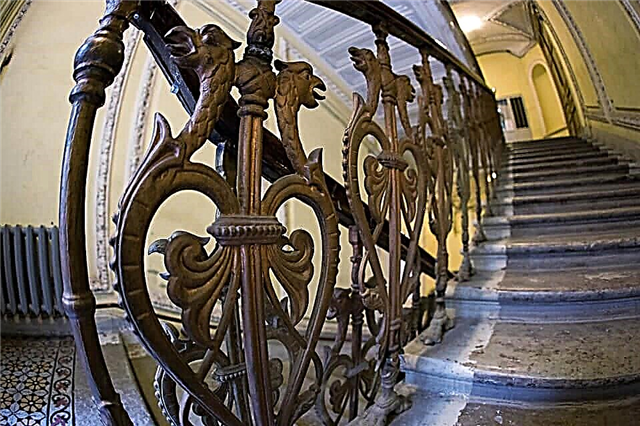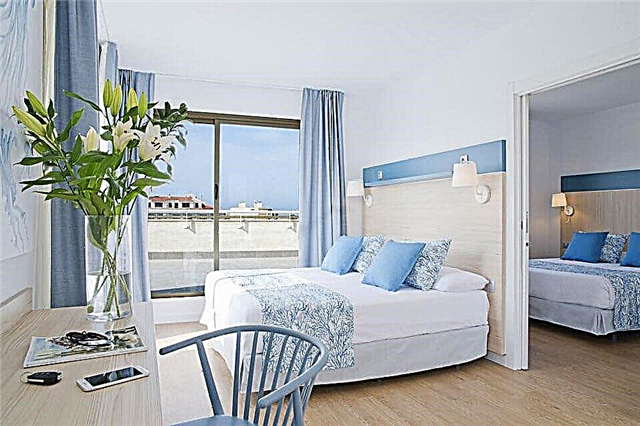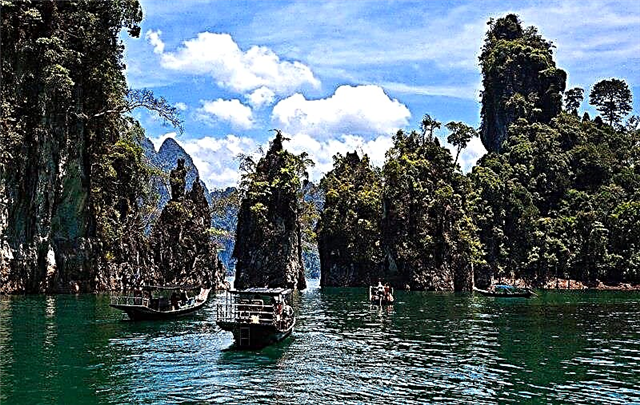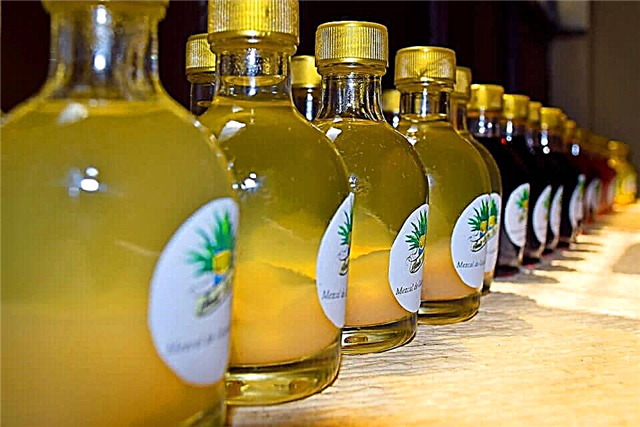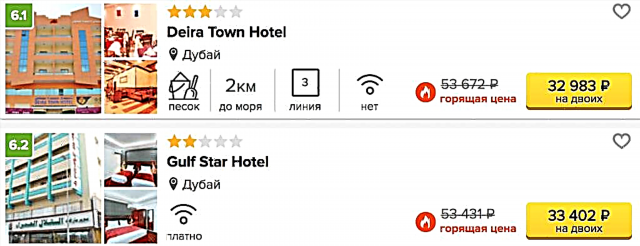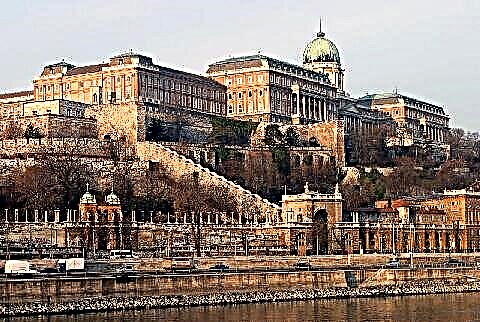Budapest, the capital of Hungary, is able to provide tourists with an unforgettable experience. Its many attractions can be seen for a long time. If you are traveling on a tourist program, you will be accompanied by an experienced guide. But if you are a free tourist, then you will probably ask yourself: what to see in Budapest in 3 days on your own?
How to get from the airport to the center

First of all, from the airport you need to get to the city center. The most economical way is to use public transport. There is a bus stop near the exit from Terminal 2B. From here, by bus 200E you can get to the metro. The station is called Kőbánya-Kispest. The buses are open from 4 am to 11 pm. The road will take about half an hour. It is also easy to take a taxi right from the airport. The minimum cost is from 8 euros. It is better to book a car with a company of 3-4 people and share the fare for everyone. If you make an order in advance, via the Internet, the taxi driver will be waiting for you right in the arrivals hall with a sign. This is especially convenient for those arriving at night.
First day
Budapest consists of two parts, separated by the Danube River. The older part is called Buda and lies on the hills. Inspection of its sights will allow you to get acquainted with the history of the country. Pest is on the plain. There are more modern buildings, shops, here during the day - and in some places at night - life is in full swing at night. When planning excursions, it is worth starting from Buda and ending with Pest.


While in the capital of Hungary, you will hear several names of this place. Local residents say: "Fortress Hill", "Castle Hill", "Buda Mountain". It would be worth climbing here, even if you were in Budapest for only 1 day. Here you can see the city from a bird's eye view and get to know its main attractions. The Chain Bridge over the Danube leads here. From the side of Pest, the bridge overlooks Roosevelt Square, and from the Buda side - to Adam Clark Square. Climbing the Buda Hill, first of all, it is worth exploring the Holy Trinity Square. This area was formed in the Middle Ages. There is also the Plague Column - in the countries of Western Europe it was customary to erect monuments to victims of the plague. In the 17th and 18th centuries, Austria-Hungary experienced several severe epidemics, which significantly reduced the population.
Temple, Bastion and Royal Palace

Pay attention to the Matthias Temple. This is what the locals call him, referring to King Matthias Corvinus. In fact, the temple is dedicated to the Virgin Mary, and it is about 700 years old. Many times over the years, the beautiful temple was destroyed, and then restored again, and at the same time it was slightly rebuilt. When the city was under the rule of the Turks, there was the main mosque of Budapest. Of course, during these years the temple lost its interior decoration. Only at the end of the 19th century, after the liberation from the Turkish yoke, the church was restored again, and it regained its former Gothic appearance. Its high bell tower and roof covered with multi-colored carpet-like tiles are visible from afar.
The restoration of the Hungarians was timed to coincide with the national holiday - the millennium of the acquisition of the Motherland. Another attraction in the neighborhood is the Fisherman's Bastion. Until the beginning of the 20th century, there was a fish market here. Then a bastion was built of white stone - it became the backdrop for the temple of the Virgin Mary. It was the fishermen who had to defend it, in case the war broke out. The bastion is crowned with seven towers symbolizing the 7 Hungarian tribes. Near the bastion there is a monument to St. Stephen, the first king of the Hungarians. He is depicted sitting on a horse.

And finally, the Royal Palace. Enter it through the Ornamental Gate, admire the beautiful drawing. Near the entrance to the palace, you will see a column on which the Turul bird sits. According to legend, the mother of the first ruler of the country gave birth to a son precisely from this bird. Since then, she has become a symbol of the ruling dynasty. Then the bird appeared in a dream to the leader of the Hungarian tribes and indicated to him that it was time to move to the local lands. Therefore, the image of the mythical bird is still dear to the Hungarians.
Also at the entrance there is a monument to the legendary Eugene of Savoy, who liberated the Hungarian lands from the Turks. Savoy became famous for the fact that, thanks to his intelligence and desperate courage, he went from an ordinary soldier to a generalissimo. His main historical merit is precisely the liberation of Hungary. For this he received his high rank and Hungarian lands. The prince sits on a horse, below are the defeated Turks. The monument dates back to 1900.
Where the palace is now located, back in the 13th century. the first royal residence appeared. In the 15th century, with the participation of the best architects and artists of Europe, the palace was erected. Later, Italian architects gave it the features of the Renaissance. Everything here was arranged very richly - gilding and fine carving were used in the decoration. In 16, the Turks destroyed the palace; it was rebuilt in the 19th century. But during the Second World War, as a result of bombing and artillery shelling, the palace again turned into ruins. It was restored in the 2nd half of the 20th century. If you have free time, you can explore the royal premises all day long.
Let's stand at the fountain of King Matthias

One of the real treasures of the palace is the fountain of King Matthias. This is an extraordinary exposition, it is worth approaching it if only for the sake of taking wonderful photos. The fountain seems to protrude from the wall. Above is the king himself, below are hunters and dogs, and to the right is a lovely girl with a fawn. As the legend says, the beautiful Ilonka fell in love with a young hunter, not suspecting that the king himself came out of the thicket to her. Realizing the hopelessness of her feelings, the girl quietly faded away.
The figure of the chronicler who preserved this legend for posterity is to the left of the main sculptures. In the warm season, streams of water murmur here, it seems that hunting dogs are drinking from a fountain. And if, leaving the palace, you stroll along the fortress wall - usually there are not many people here - you will see a wonderful panorama of Budapest, and below the blue Danube will roll its waters.

Tips: Pay attention to Adam Clark Square at the foot of Buda Hill. Here you can:
- see the tunnel that runs under the hill, its length is about 350 m
- admire the mark "0 km" - from here all distances in Hungary are measured
- see Lotz's mosaic panel on the city wall - it is very beautiful and belongs to the Middle Ages
- and the most convenient way to go up is the funicular. It was opened at the end of the 19th century, and since then it regularly transports tourists. The funicular will take you to the observation deck. Opening hours from 7.30 to 22.00, trailers leave at intervals of 5-10 minutes, and the rise takes 1 minute.
Ticket price - 2 euros
Surely after sightseeing, you will want to eat. One of the many kiosks offers delicious fresh pastries. If you want to sit in a restaurant, you can recommend the "historical points" - Ruszwurm coffee shop, Alabbrdos and Gundel restaurants. Everything here seems to breathe bygone centuries, and you will feel as if you have traveled back in time.
Second day
The second day should be devoted to exploring the center of Budapest.
Skip-the-line: Széchenyi baths full day - 18 €
Budapest: hop-on hop-off Classic, Premium or Deluxe bus - 16.20 €
Full day at the Gellért Spa center without queues - 19 €
2-hour Danube cruise with live music - 21 €
Danube cruise with candlelight dinner - 60 €
From Budapest to Szentendre: full-day cruise - 12 €
Organ music concert at St. Stephen's Basilica - 20 €
Budapest Tourist Card - 22 €
Heroes Square

Here is one of the main squares of the city - Heroes' Square. This place has been of great importance for the Hungarians since time immemorial. Once upon a time there was a field on which the state councils gathered, here soldiers came together to go on the Crusade. And only at the end of the 19th century the square itself and the first sculptures appeared on it. The opening of the ensemble was timed to coincide with the 1000th anniversary of the Hungarian statehood. The central column is crowned with the figure of the Archangel Gabriel.
According to legend, it was thanks to him that King Istvan adopted Christianity. Two semicircular colonnades created in the late 19th - early 20th century are dedicated to the heroes of the country. Monuments to the Hungarian princes stand between the columns. Next to the square is the Mucharnok exhibition center. This art gallery opened its doors in 1895.

Varoshliget Park begins right behind the square - it is loved by both locals and tourists. But the most interesting object in the park is Vaidahunyad Castle. It was built in 1908 and now houses the Agricultural Museum. The castle is so beautiful, and so organically combines the best features of Hungarian architecture, that tourists are sure to take pictures against its background. And then they tell at home that Count Dracula lived in the same castle (and maybe in this one).
The Szechenyi Baths are also located next to the Heroes' Square. Built at the beginning of the 20th century, they are still considered one of the largest bathing complexes in Europe. There are swimming pools here, you can visit a doctor and, on his recommendation, undergo balneological procedures. Tips: you can get to Heroes' Square by metro - yellow line M1. By buses No. 105, 20 E, 30A, 230. By trolleybuses No. 72, 75, 79.
Andrássy Avenue

Varosliget Park connects with Ferenc Deak Square Andrássy Avenue, which is called the "Hungarian Champs Elysees". This beautiful alley is listed as a UNESCO World Heritage Site. The avenue got its name in honor of Count Andrássy, the minister-president of the Hungarian government. Subsequently, it was renamed several times, but in the end it retained its original name. The avenue was built for 40 years. It may seem that it is surrounded by houses that came from ancient times, but in fact this is not so, it was just that a pseudo-historical style was used.
There are shops, restaurants, cafes, and, of course, hotels. Walking along the avenue, you can feel that the asphalt underfoot slightly shakes. It's not an earthquake - it's just that a subway line runs underground. It is one of the oldest in Hungary and throughout Europe, and is shallow. Do not miss the opportunity to go down to the subway and see it as a kind of attraction. Also on Andrássy Avenue there is the Post Office Museum, where more than 20 thousand exhibits are exhibited. It works from Tuesday to Sunday, and the entrance ticket costs 600 forints.
Opera theatre

The Opera House, one of the main centers of culture in Budapest, also faces the avenue. It was built in 1884. Before that, there was a single National Theater in Hungary, where opera and drama performances alternated. The building was built in the neo-Renaissance style, and inside is a real work of art. There are many sculptures and paintings, as well as wall paintings - tourists will be interested to see all this.
Famous singers and musicians performed on the stage of the State Opera House, and Giacomo Puccini staged his operas here several times. Ballet companies also perform here. The theater can accommodate over 1200 spectators, and the acoustics here are second only to two theaters in the world - the Paris Opera and the world famous La Scala (Milan). At the entrance to the building there are monuments to two Ferens - Liszt and Erkel.
House of Terror

Another attraction on Andrassy Avenue is the House of Terror. It makes an unusual and strong impression on tourists. The letters "terror" are carved into the black metal cornice. Opposite the entrance is a curtain of dense iron chains. Nearby is a block of concrete that symbolizes the Berlin Wall. The House of Terror itself is a memory of two political regimes, from which Hungary suffered a lot in the 20th century. Here the communist and Nazi regimes were leveled, and a museum was created so that people would forever remember the losses that the country suffered.
The museum was opened in 2002, on the eve of the Day of Victims of the Communist Regime (February 25). During World War II, this house was the headquarters of the Nazi Arrow Cross Party. And then - the State Security Department, that is, the country's KGB. Tickets are not cheap - 7 euros. But there are always enough visitors: here you can get very strong emotions. The exposition includes a Soviet tank. These suppressed the popular uprising in Hungary in 1956.

The museum contains a lot of exhibits: photographs of those who were tortured by the Nazi and communist regimes, personal files. The investigators' offices are designed in such a way that it seems that interrogation will begin in them now. Here the elevator slowly descends into the basement - at this time tourists listen to the story about what tortures were used in these dungeons.
And then they see the cells where the prisoners were kept. Including those where the floor is filled with ice water, and those cells where you had to stand for 20-30 hours without being able to sit down. Lights are burning, symbolizing the souls of the innocent victims. There is also a room in the museum, the floor of which is made in the form of a map of the USSR - with notes: in which camps the Hungarians were imprisoned. The museum does not spare the feelings of the visitors. "This should not happen again" - such a thought is born after visiting each of its halls.
Tip: You can end the second day with a boat trip on the Danube. Local residents use water transport along with bus and trolley buses. The most convenient way is to buy a daily pass - it costs about 6 euros. Thus, you can get off at stops, sightseeing or walking around the islands, and then board again the first boat that comes up. They are single-deck and double-deck, open and closed.
You can choose depending on whether you want to photograph the places you pass by, or are going to take shelter from the rain. As a rule, there are buffets here and you can have a good snack. It is even more convenient to purchase a Budapest tourist card. It includes a travel card that includes all modes of transport, free admission to 7 major museums, guided tours and discounts. The card can be purchased for 24, 48 and 72 hours.
The third day
So, you have only one day left in the capital of Hungary. It can be done in different ways. If you still want to do some sightseeing and wonder what you haven't seen yet? - let's name a few objects in Budapest that may interest you.
Hungarian parliament building

This is a real architectural masterpiece and a visiting card of the capital. There is a building on the right bank of the Danube. It was built in the neo-Gothic style, richly decorated with architectural delights, and its peaked towers exactly stretch to the sky. This is one of the main attractions of the capital.
Basilica of St. Stephen

This is the largest Catholic church in Budapest. But, of course, not only Catholics come here, but also just tourists. The temple reaches a height of almost 100 m. The huge structure was erected over several decades, and was consecrated only in 1905. Believers can venerate the relics of St. King Stephen in the temple.
Great synagogue

One of the largest in Europe. The synagogue is located in the Jewish quarters of modern Budapest. It really makes a stunning impression, and can accommodate almost 3 thousand people. The Jewish Museum is open in the courtyard of the synagogue. The synagogue was plundered during World War II and rebuilt by the end of the 20th century.
Danube embankment shoes

You can only respect the Hungarians. Remembering the tragic events in the history of the country, they do everything to prevent this from happening again.During World War II, thousands of Hungarian Jews were shot or burned in gas ovens. There is a touching monument on the Danube embankment - there are many shoes. Shoes for men, women, children - who have lost their owners. The names of the victims are also immortalized.
Mount Gelert

You can go to Mount Gelert. This is a hill named after Saint Gelert, the patron saint of the city of Budapest. The following are of interest here: the historical citadel of the 19th century, the huge Statue of Liberty (it does not at all look like the American one), the Philosophical Garden. You will see here sculptures of Jesus Christ, Buddha, Akhenaten and many others.
The sculptural composition "Buda meets Pest", depicting a king and a beautiful girl, a functioning church in a mountain cave. You cannot climb to the top by public transport. But there are stops at the foot. You can get here by metro M4 (green line). By buses No. 7, 8E, 108E, 110, 112. Advice: be careful, there are many local crooks, such as domestic thimblers. Don't agree to their offers to play.
Brunswick Castle

You can take a taxi and go to Brunswick Castle, which is 30 km from Budapest. The castle itself and the surrounding park are beautiful. But, most importantly, it is closely associated with the name of Beethoven, who often visited here. Brunswick has a memorial museum for the great composer.
Belvaroche

But, perhaps, on the last day in the capital of Hungary, you will want to devote to rest and buying souvenirs for your loved ones. Then the best way is to go to Belvaros, which means "city within a city". Here is a kind of tourist Mecca - many souvenir shops, large and small restaurants serving national dishes. What are the best gifts to bring from Hungary? From products - ground red pepper in beautifully designed bags and a variety of wines - "Hungaria", "Terlei", "Asu", "Samorodni". It also makes sense to purchase Hungarian smoked sausages.
An excellent purchase will be embroidery made by the hands of local craftswomen, woven products, dishes - from ceramics to crystal and porcelain. And also - wooden dolls and figures of cartoon characters, made of marzipan. But if you also want to see the sights in Belvaroche, pay attention to the Church of St. Michael. The building, built in the Baroque style, with a bell tower with a clock rises high above the surrounding houses. Concerts of classical music are regularly held here.
Baths

And finally, the baths. This is also a kind of visiting card of Budapest. A visit to the baths will allow you to relax and unwind, provide yourself with a good mood. You can choose according to your taste. We have already talked about the Szechenyi baths above - this is a huge and very popular complex. But, besides him, there are others.
The luxurious Gelert baths, where there are even artificial waves, Rudash - four days a week owned only by men, Kirai - decorated with a Turkish flavor, Lukach and Veli Bey. You can choose the one of the baths that is closer to your hotel.
Tips: if you have another day, visit the baths in the morning, so you can swim almost alone. This pleasure costs about 10-16 euros. Perhaps you will go to Budapest without much enthusiasm. Well, what is there - not Paris, not Rome ... But, having arrived in the capital of Hungary, you will make many amazing discoveries for yourself, discover the richest history and culture of this country, admire its beauty, and love Budapest forever. It simply cannot be otherwise.

